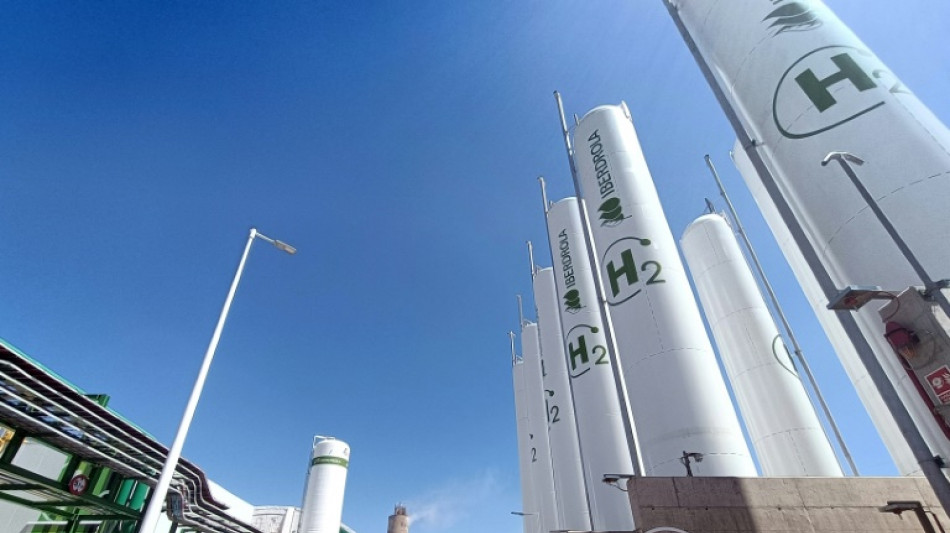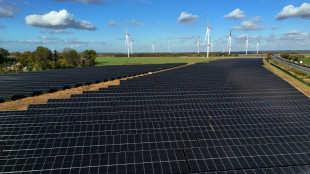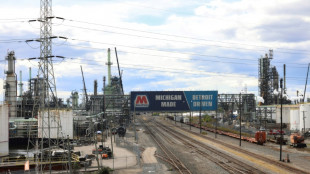

'Impossible to keep track': Spain's gamble on green hydrogen
Major green energy projects are sprouting up across Spain as it seeks to position itself as a future green energy leader -- but experts have urged caution over costs and demand uncertainty.
Spanish firms are ramping up production of emissions-free fuel and ploughing investment into green energy projects, despite fears over the high price of production.
"Everything is going very fast," said Miguel Angel Fernandez, technical director at the Spanish National Hydrogen Centre, a public research centre based in central Spain.
"There are so many projects, it is impossible to keep track of them all."
Most hydrogen is currently produced using polluting fossil fuels but so-called "green hydrogen" is made entirely using renewable energy such as wind, solar and hydropower.
While fossil fuels emit harmful greenhouse gases when they burn, hydrogen only emits water vapour.
Madrid launched a 1.5-billion-euro ($1.7-billion) plan in in 2021 to support green hydrogen projects, using a European Union Covid recovery fund.
Spain is now home to 20 percent of the world's green hydrogen projects -- second only to the United States.
Last year Spanish energy giant Iberdrola started operating what it says is the largest green hydrogen plant for industrial use in Europe, in the former mining town of Puertollano.
The plant uses 100 megawatts of solar panels to produce green hydrogen, which is stored in huge white storage tanks.
The initial goal is for it to provide 10 percent of the energy needed by a neighbouring factory belonging to fertiliser maker Fertiberia.
This will prevent the release of 48,000 tonnes of planet-warming carbon dioxide per year according to Iberdrola.
If the pilot project works, Iberdrola will launch a "much more important second phase" to meet 100 percent of the fertiliser plant's energy needs, said Javier Plaza, head of Iberdrola's green hydrogen division.
- Hydrogen valley -
Rival Spanish energy firms such as Cepsa and Repsol have in recent months launched similar projects.
In Spain's sunny southern Andalusia region, three billion euros is being invested to create a "green hydrogen valley" where two large factories will produce 300,000 tonnes of green hydrogen per year from 2027.
In the northern region of Asturias 15 solar power parks will be built by 2030 to enable the annual production of 330,000 tonnes of green hydrogen.
Rafael Cossent, research associate professor in energy economics at Madrid's Comillas Pontifical University, said there was an "effervescence" in the sector putting Spain in a leading role in green hydrogen production.
This is partly due to Spain's abundant sun and wind power capabilities, he added.
The Spanish Hydrogen Association estimates there are currently 50 green hydrogen projects under development in the country.
Spain could potentially produce enough green hydrogen to cover its own needs and export to northern Europe, the association argues.
- 'Long-term race' -
A major drawback for green hydrogen, however, has been the high cost of producing it.
While the price of the renewable energy used to make it has come down due to technological advances, green hydrogen has still not proven itself to be economically viable.
Massive use of green hydrogen will also require "complex transformations" by vehicles and industrial plants which make future demand for the fuel uncertain, said Cossent.
A green hydrogen economy will need a robust transportation infrastructure to transport it -- which Spain is currently lacking.
The government is counting on a planned underwater pipeline between Barcelona and Marseille, dubbed H2Med, which is expected to transport some two million metric tonnes of hydrogen annually.
Hydrogen is difficult to contain without leakage however, making it challenging to store and transport, so delays to the pipeline are widely expected.
But the giants of the green hydrogen market are undeterred.
Iberdrola's Plaza said it is important to get into green hydrogen early because "whoever starts first has the advantage".
"We are talking about a long-term race," he added.
T.M.Kelly--NG



